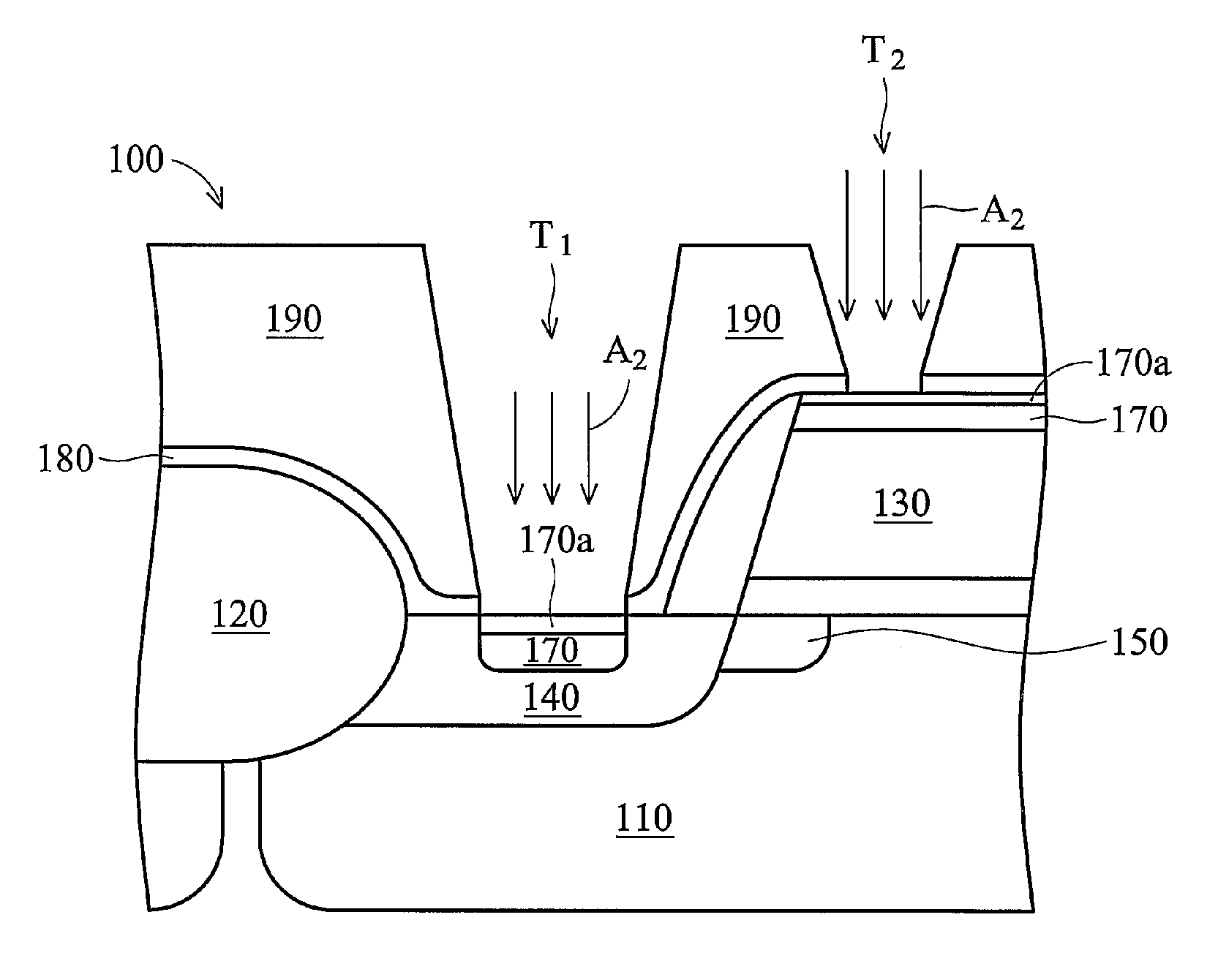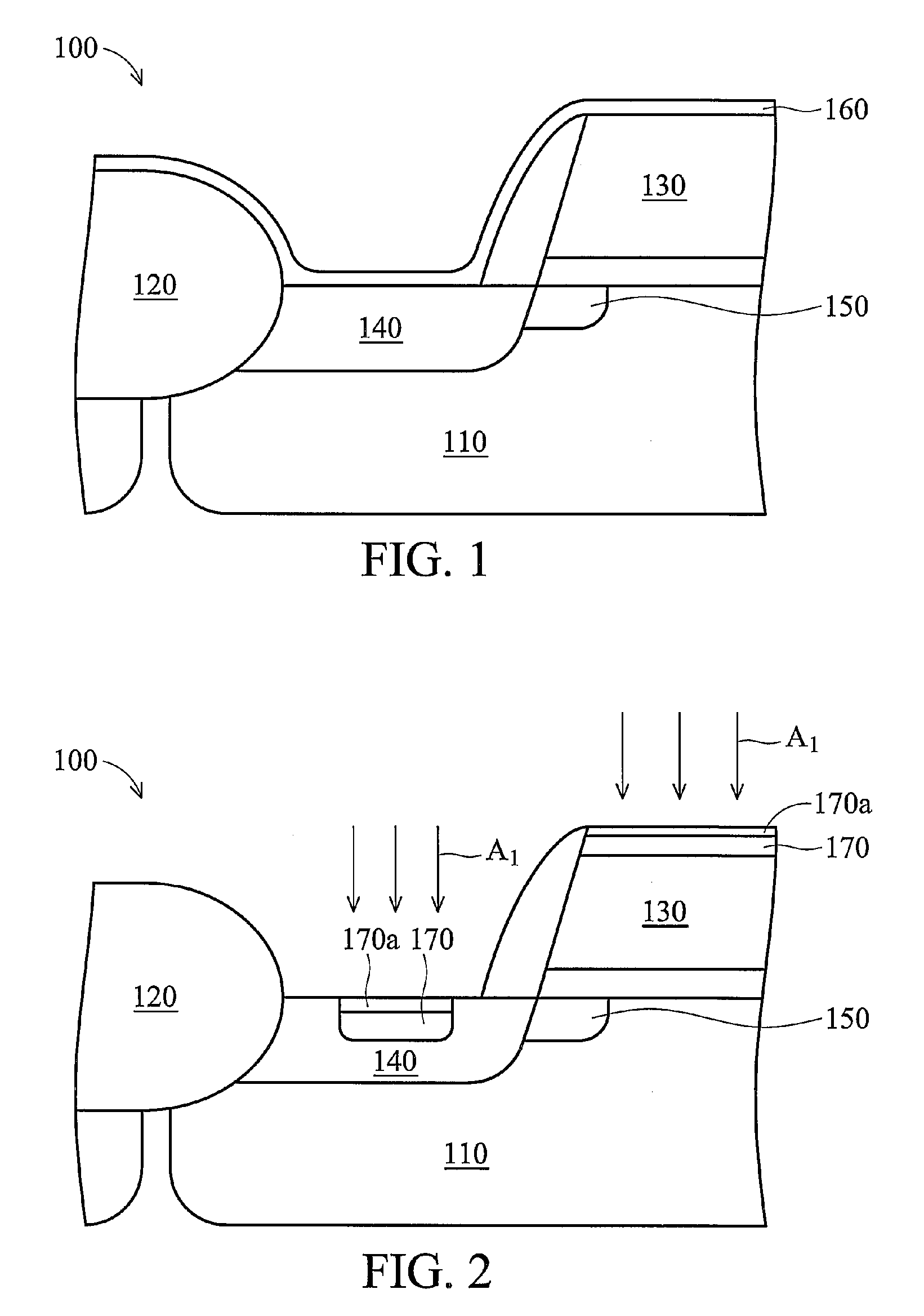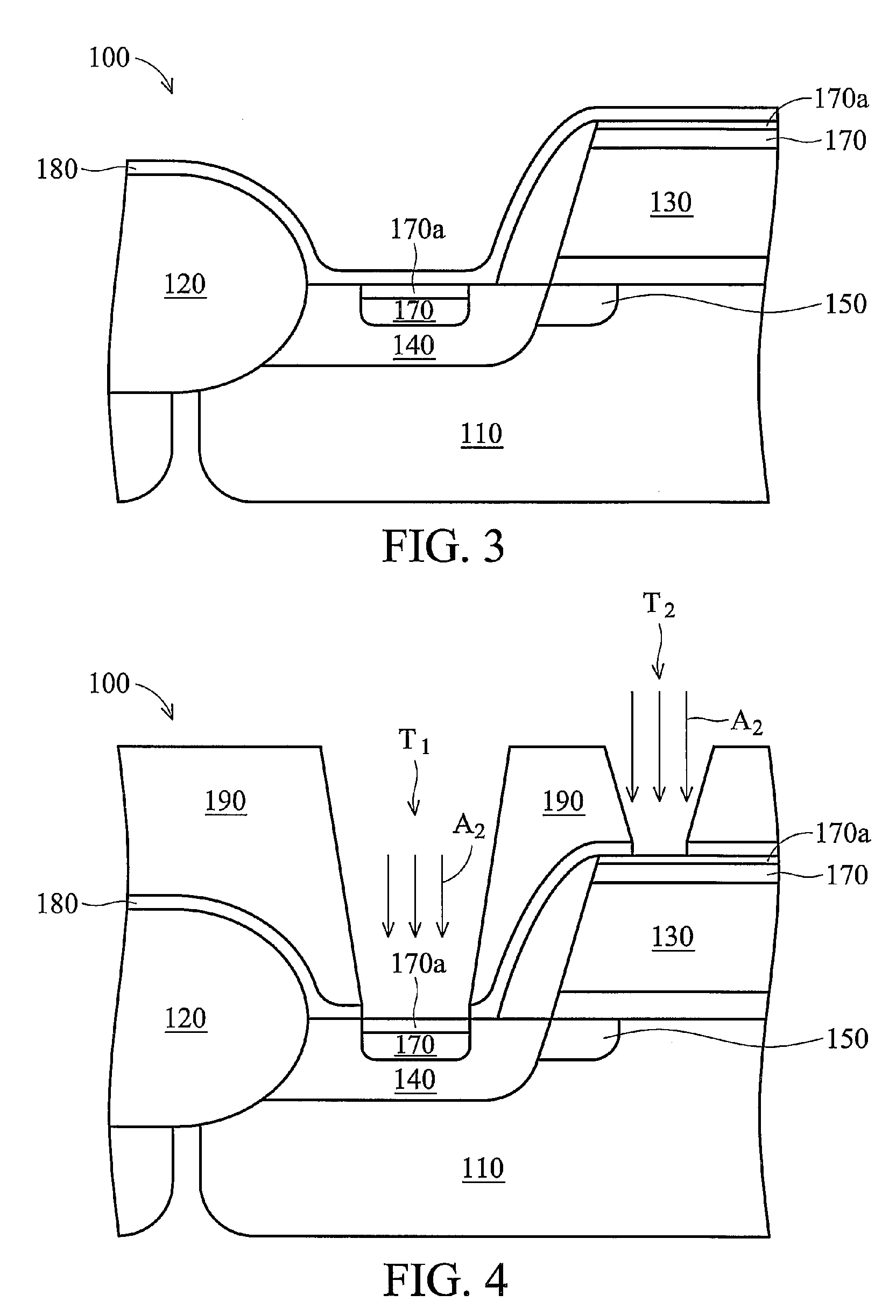Decreasing metal-silicide oxidation during wafer queue time
a technology of metalsilicide and wafers, applied in semiconductor devices, semiconductor/solid-state device details, electrical devices, etc., can solve the problems of wafers “in queue", exposed portions begin to oxidize, and the trend of ever smaller and denser devices is over
- Summary
- Abstract
- Description
- Claims
- Application Information
AI Technical Summary
Benefits of technology
Problems solved by technology
Method used
Image
Examples
Embodiment Construction
[0017]Referring initially to FIG. 1, illustrated is one embodiment of a semiconductor device 100 constructed according to the principles disclosed herein. The semiconductor device 100 is formed on a semiconductor substrate 110, which may be constructed from bulk silicon, silicon germanium, or may be a silicon-on-insulator (SOI) substrate. Separating active regions on the substrate 110 are field oxides 120 (only one is illustrated), which may be formed using conventional techniques.
[0018]In the illustrated embodiment of FIG. 1, the semiconductor device 100 is a metal-oxide-semiconductor (MOS) transistor device 100, which includes a gate electrode 130 formed on the substrate 110. The gate electrode 130 may be formed using polysilicon as in conventional techniques, however, other materials may also be employed. Also constructed as part of the MOS transistor device 100 are a source / drain region 140 and a lightly-doped drain (LDD) region 150. Both of these components of the device 100 ma...
PUM
| Property | Measurement | Unit |
|---|---|---|
| temperature | aaaaa | aaaaa |
| pressure | aaaaa | aaaaa |
| feature size | aaaaa | aaaaa |
Abstract
Description
Claims
Application Information
 Login to View More
Login to View More - R&D
- Intellectual Property
- Life Sciences
- Materials
- Tech Scout
- Unparalleled Data Quality
- Higher Quality Content
- 60% Fewer Hallucinations
Browse by: Latest US Patents, China's latest patents, Technical Efficacy Thesaurus, Application Domain, Technology Topic, Popular Technical Reports.
© 2025 PatSnap. All rights reserved.Legal|Privacy policy|Modern Slavery Act Transparency Statement|Sitemap|About US| Contact US: help@patsnap.com



